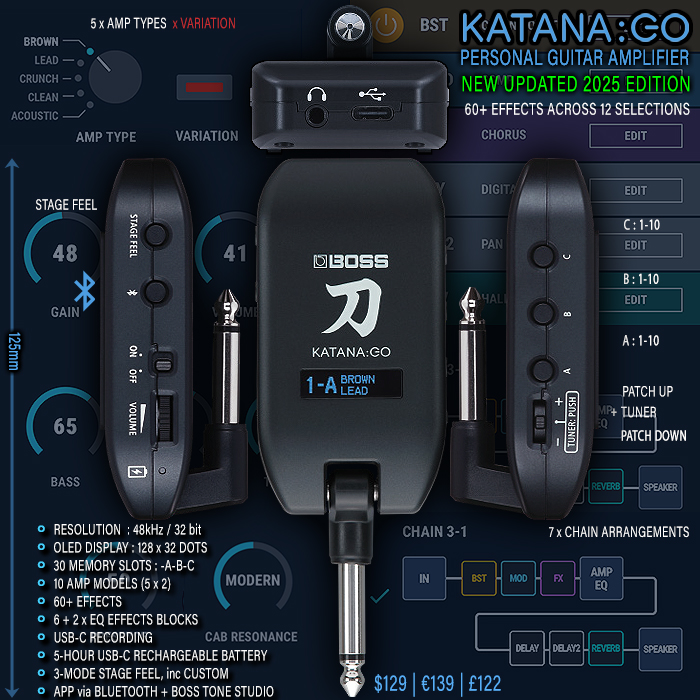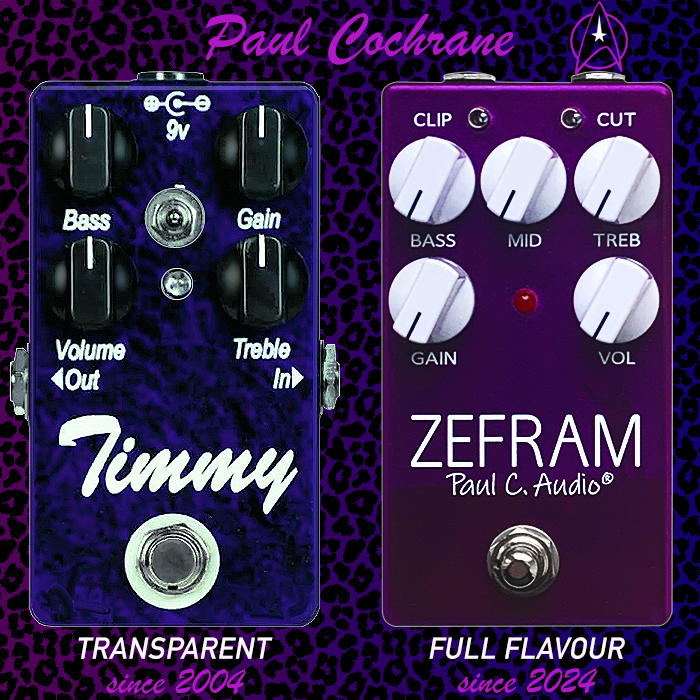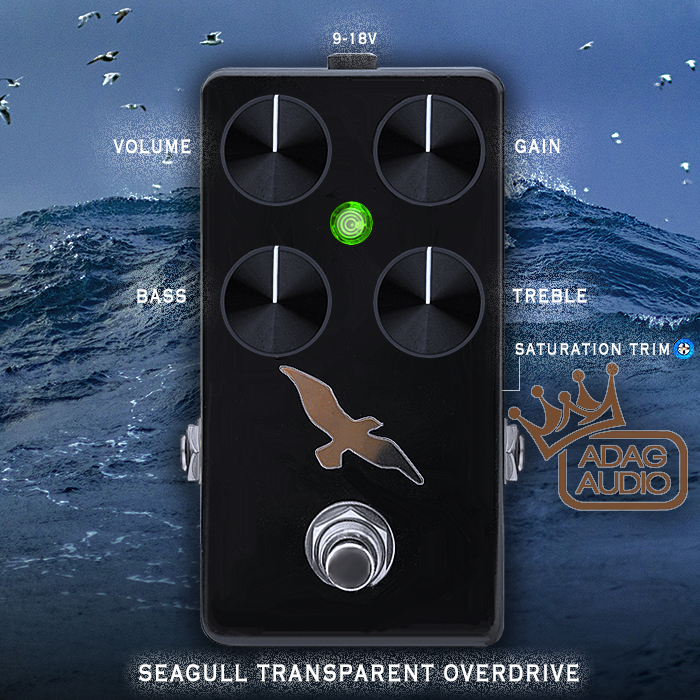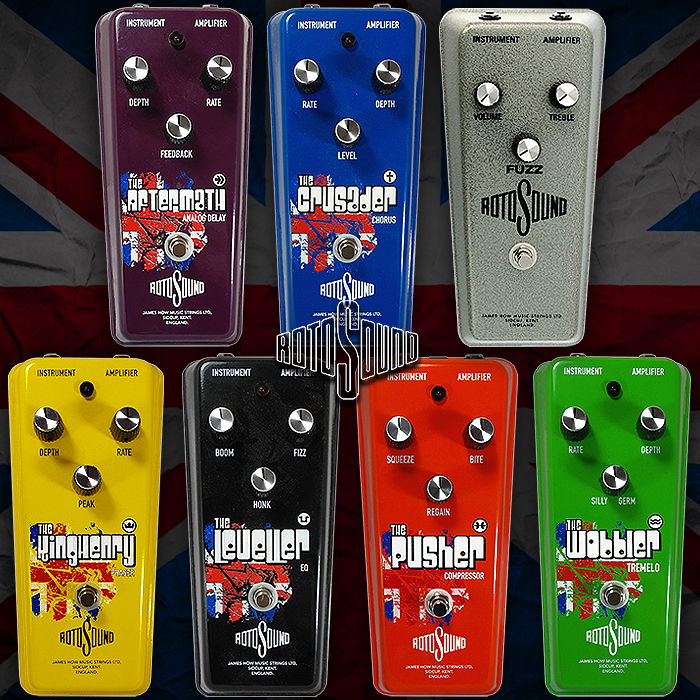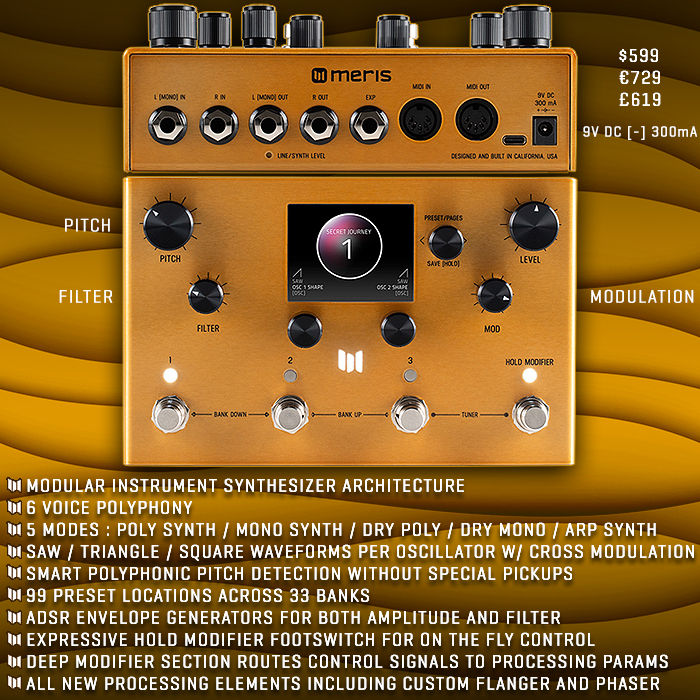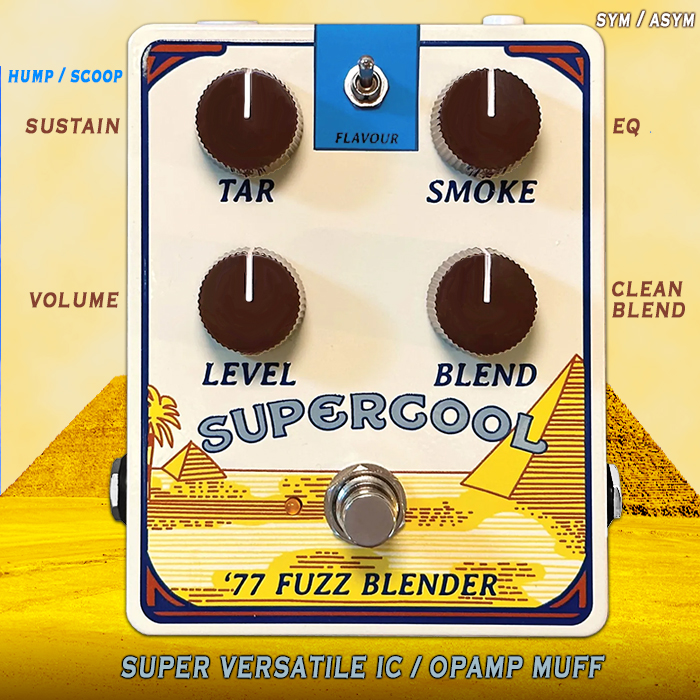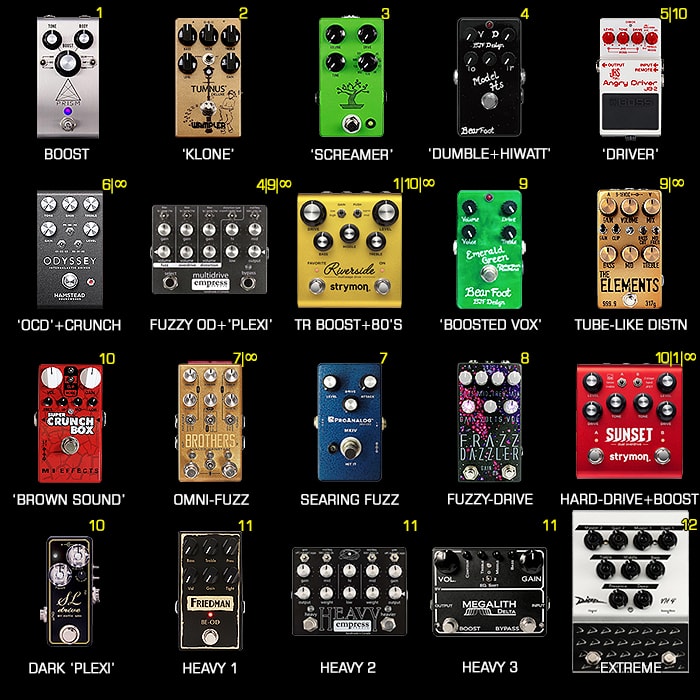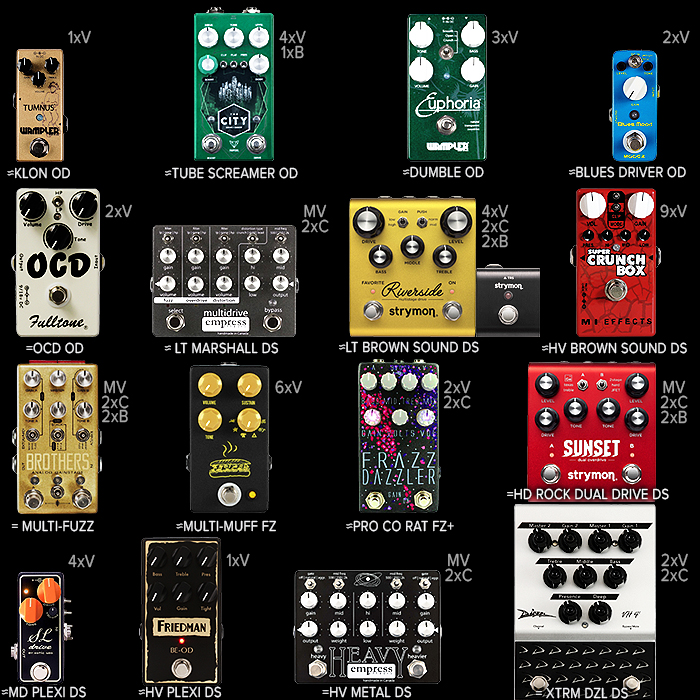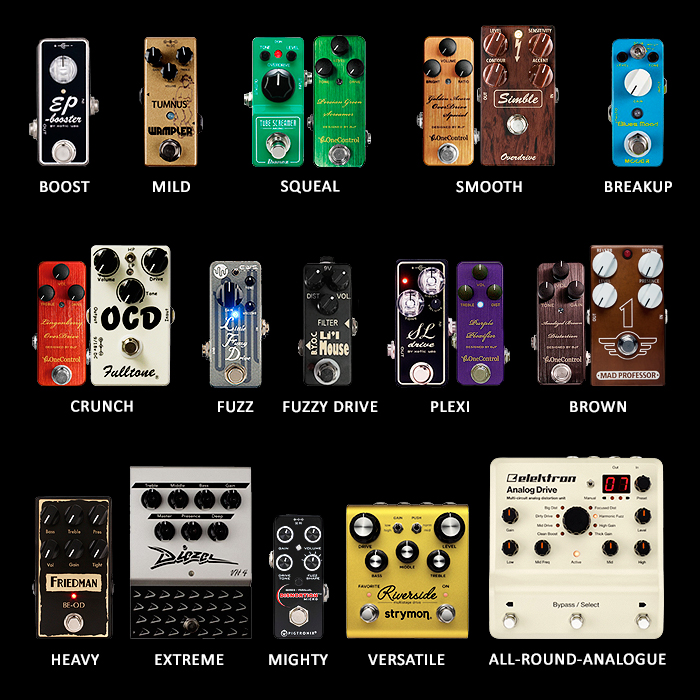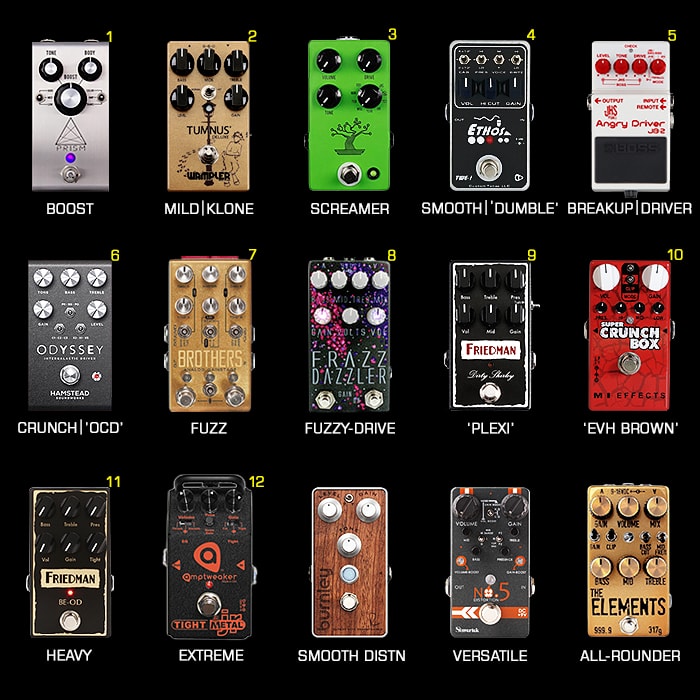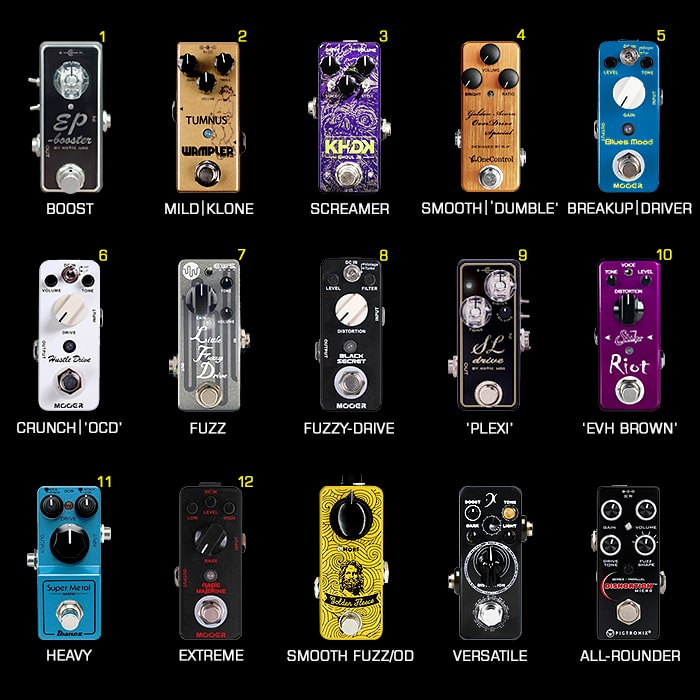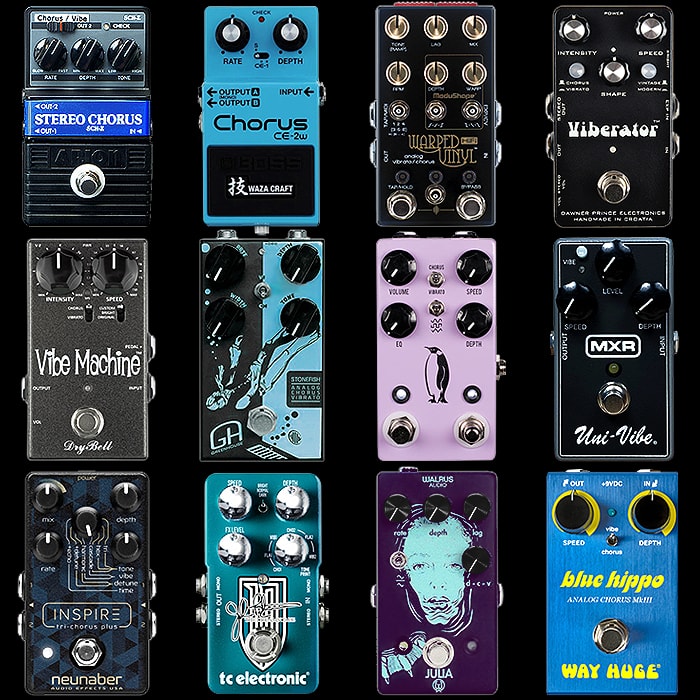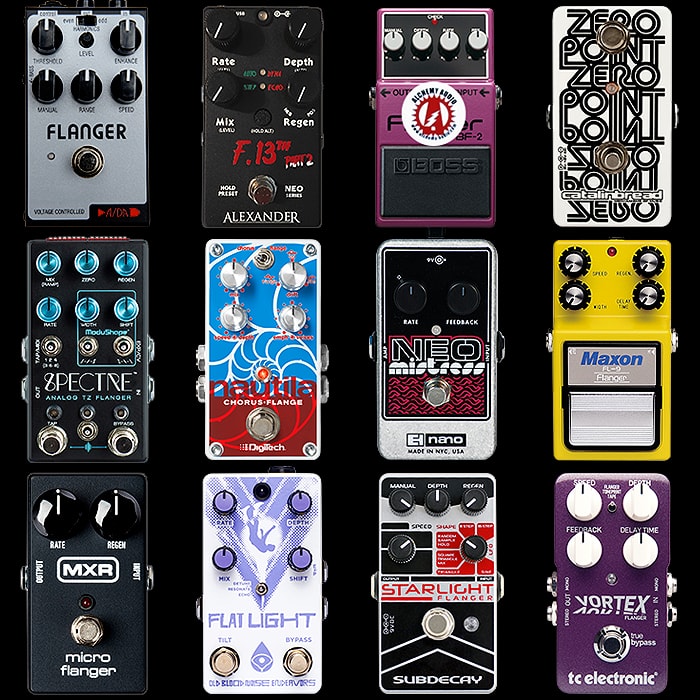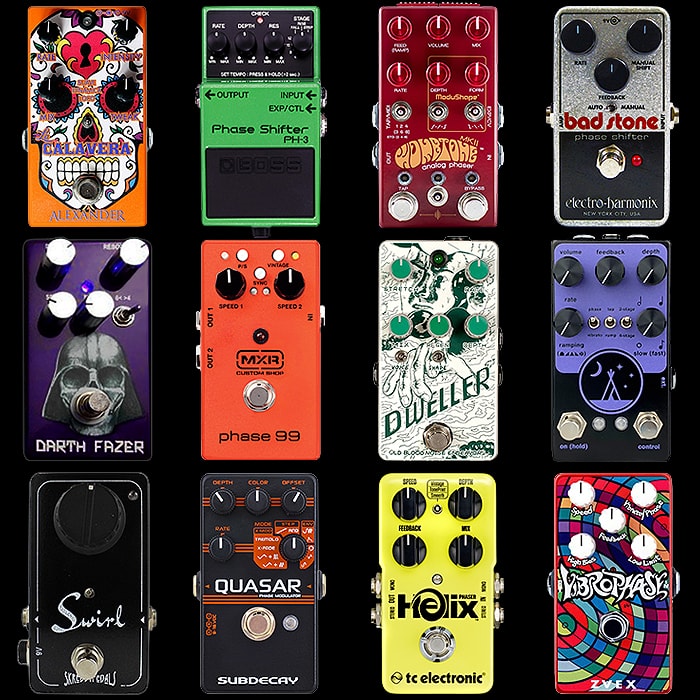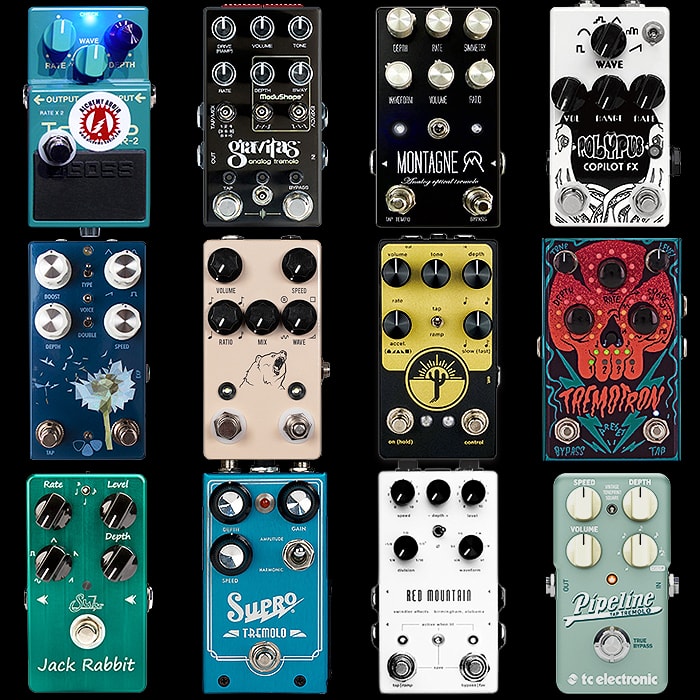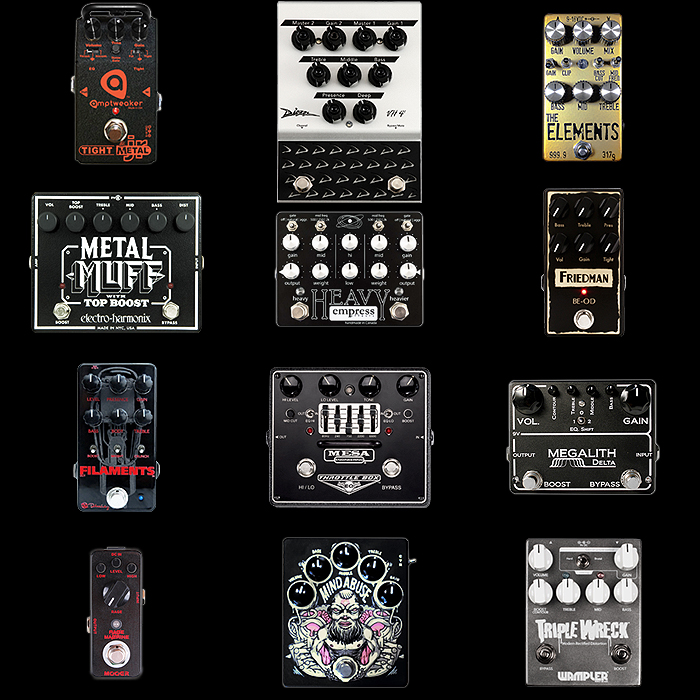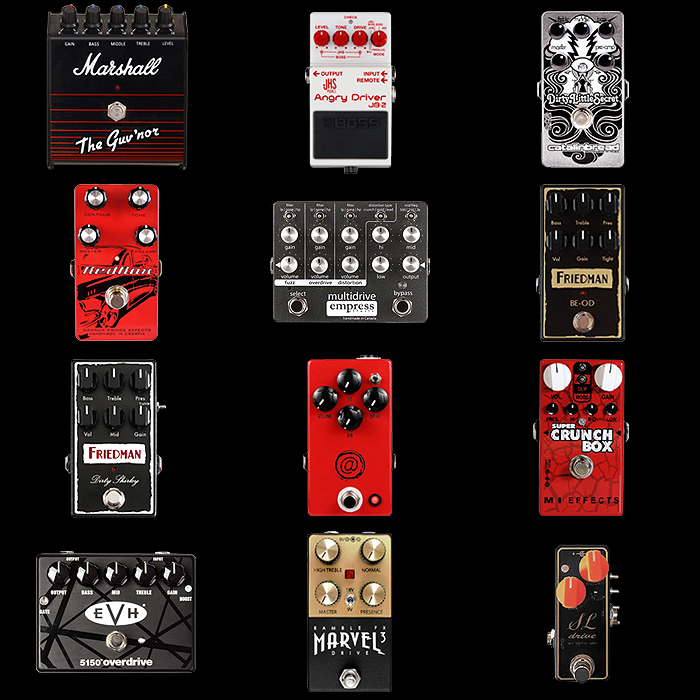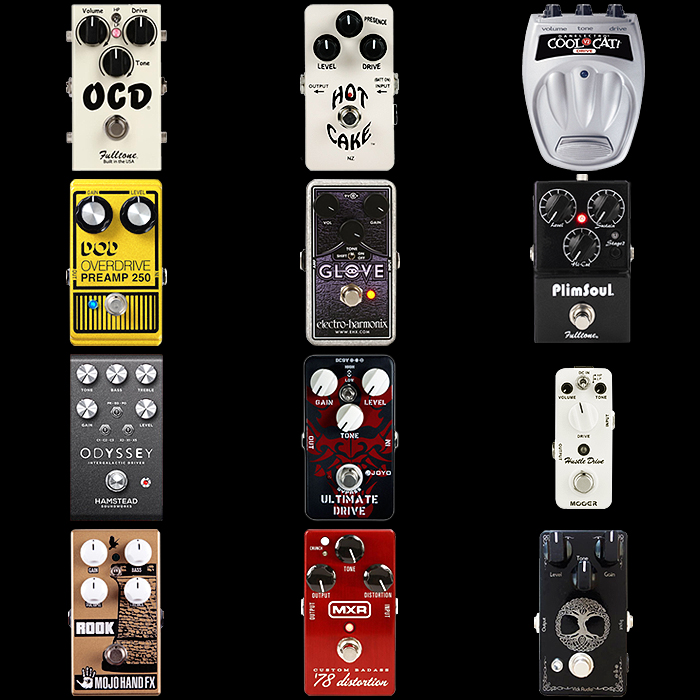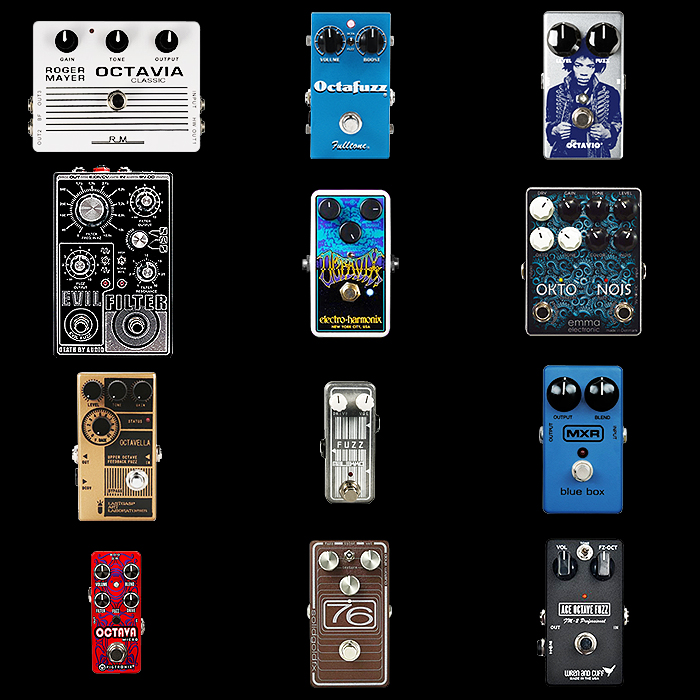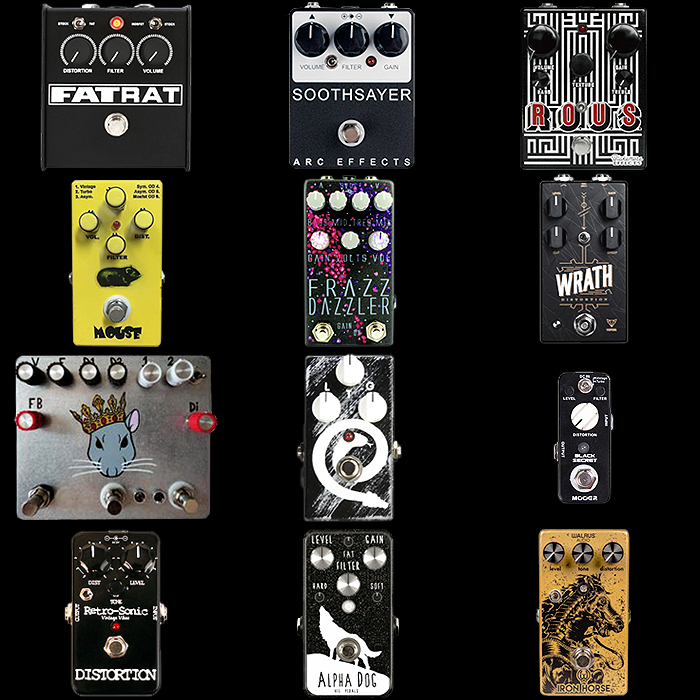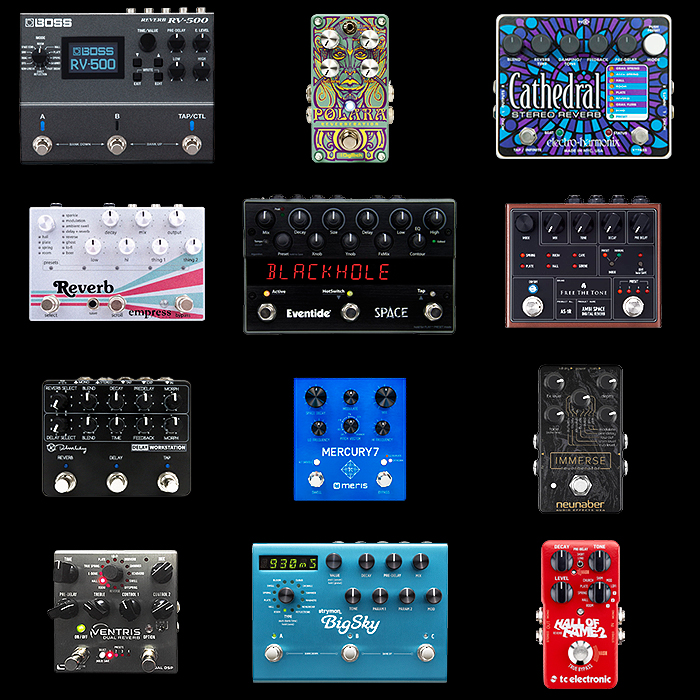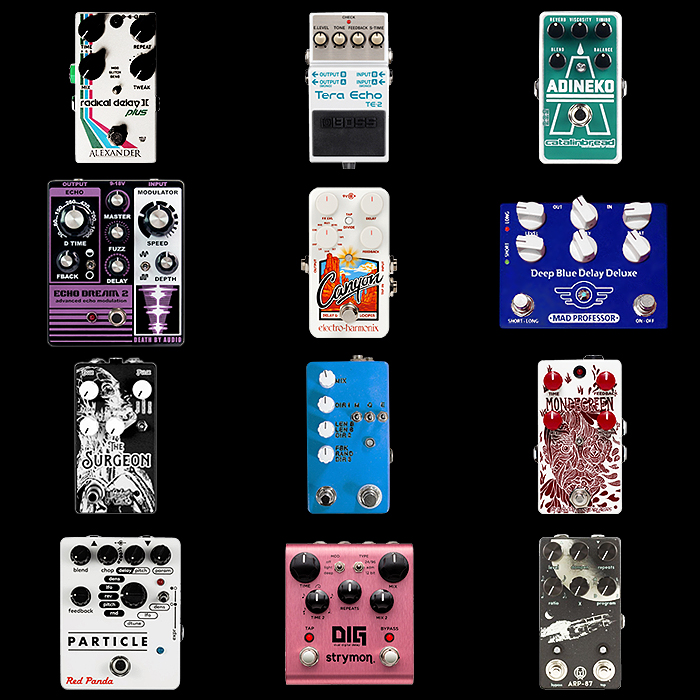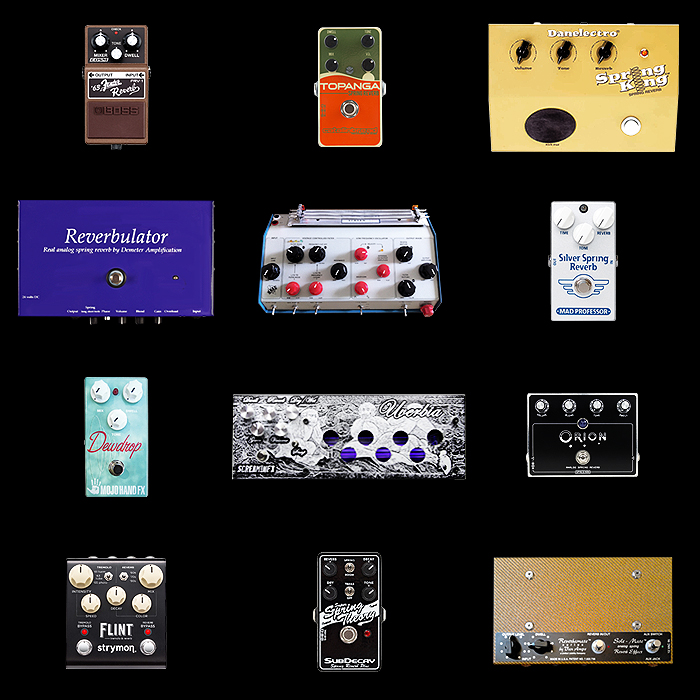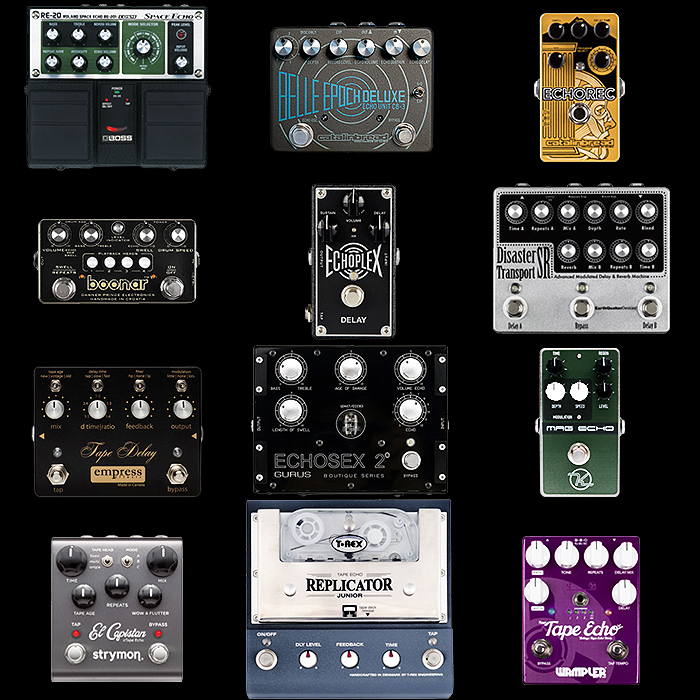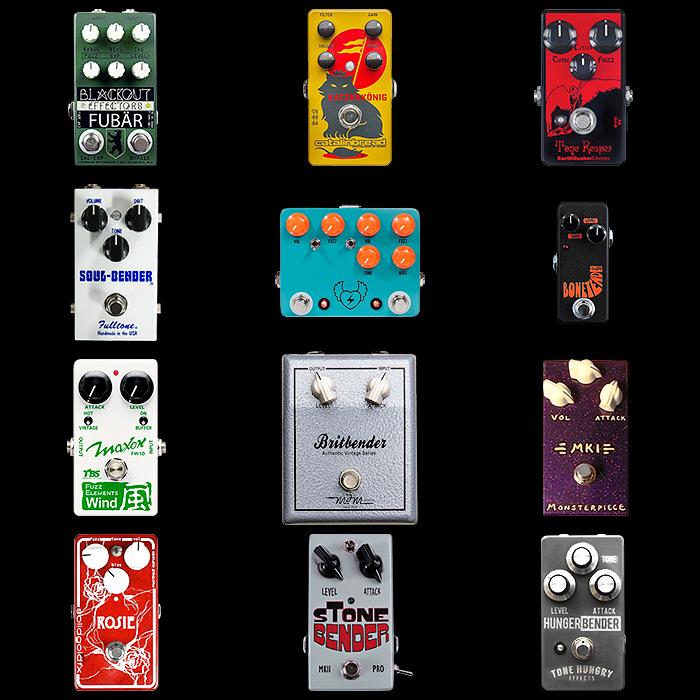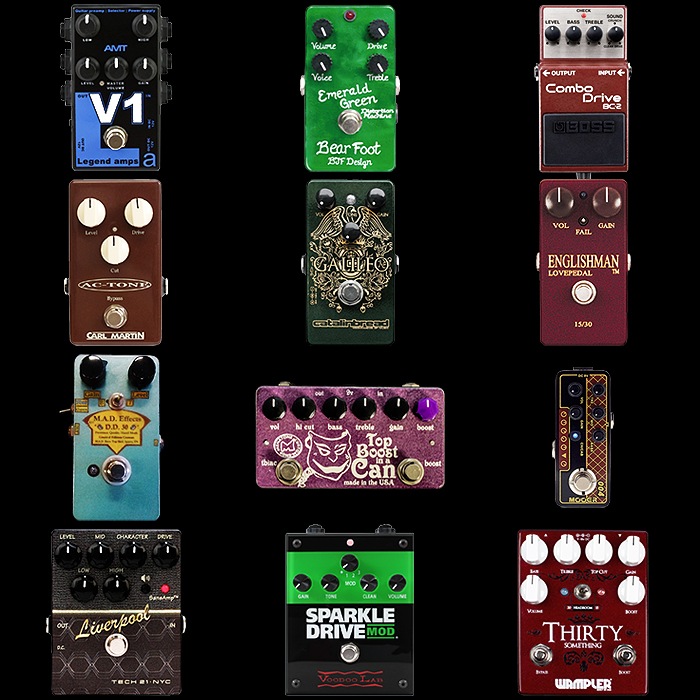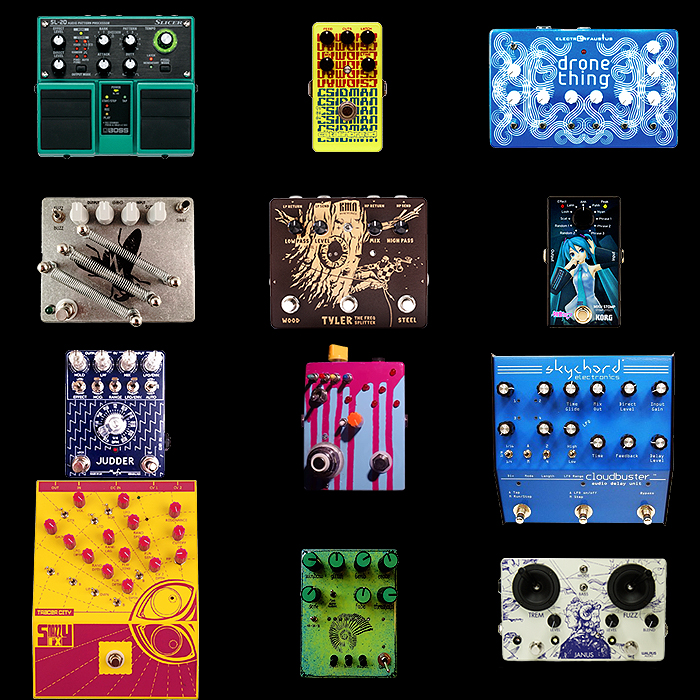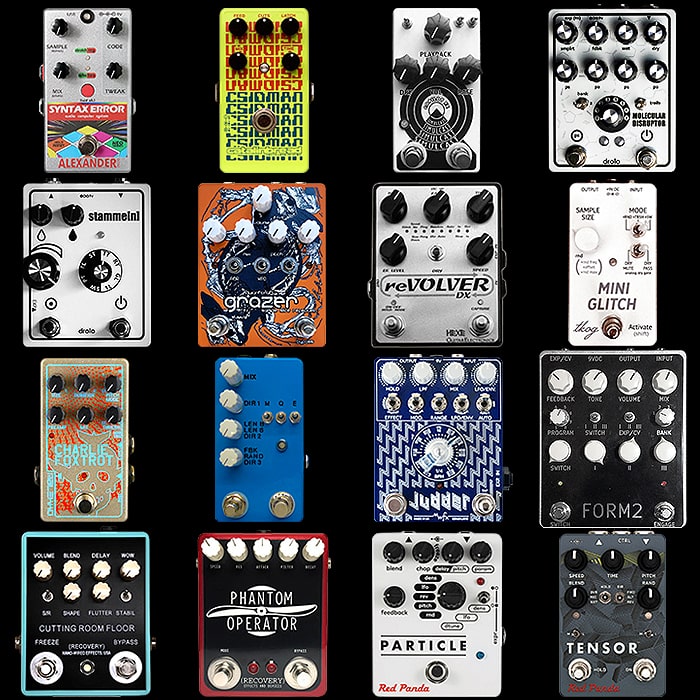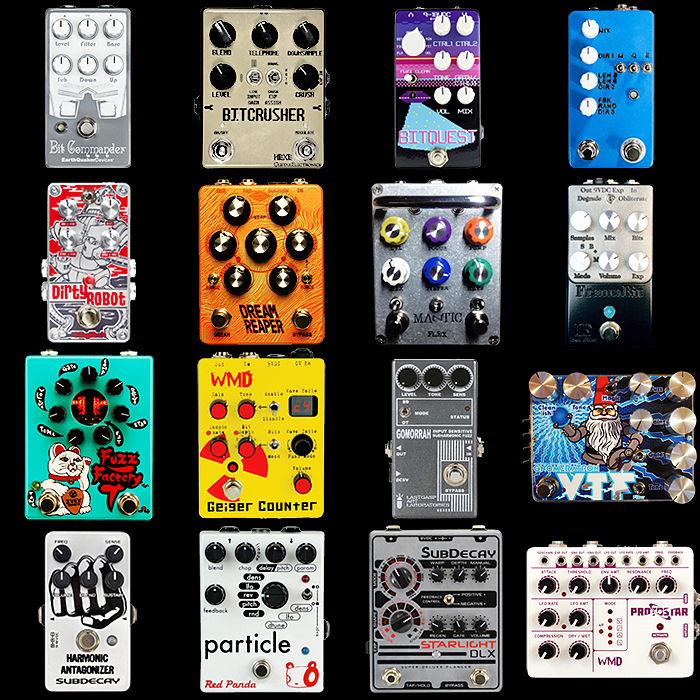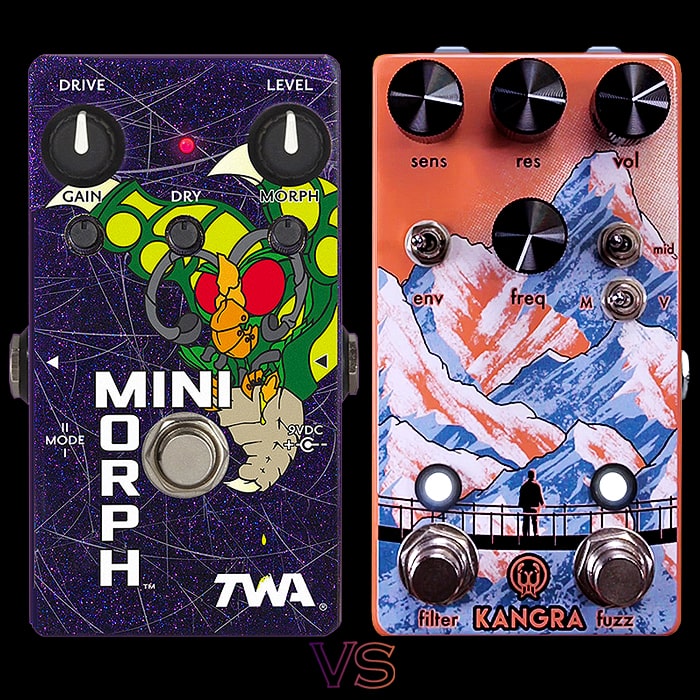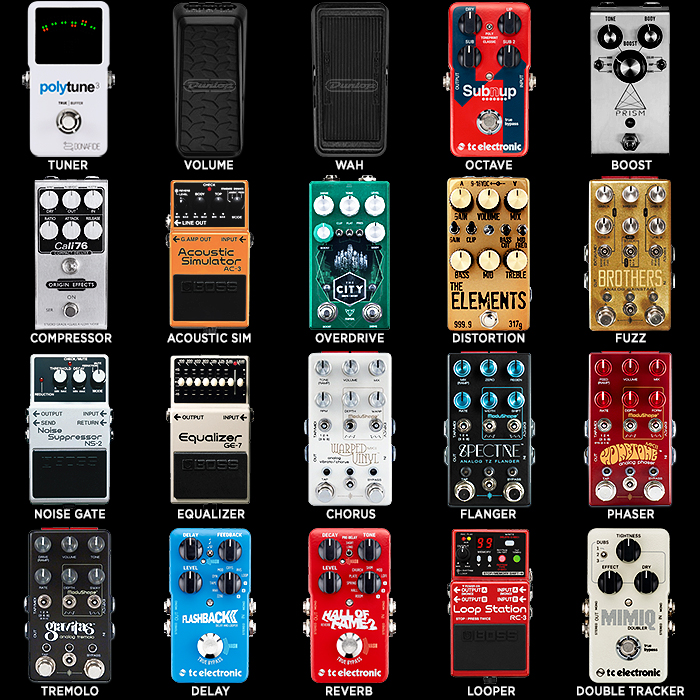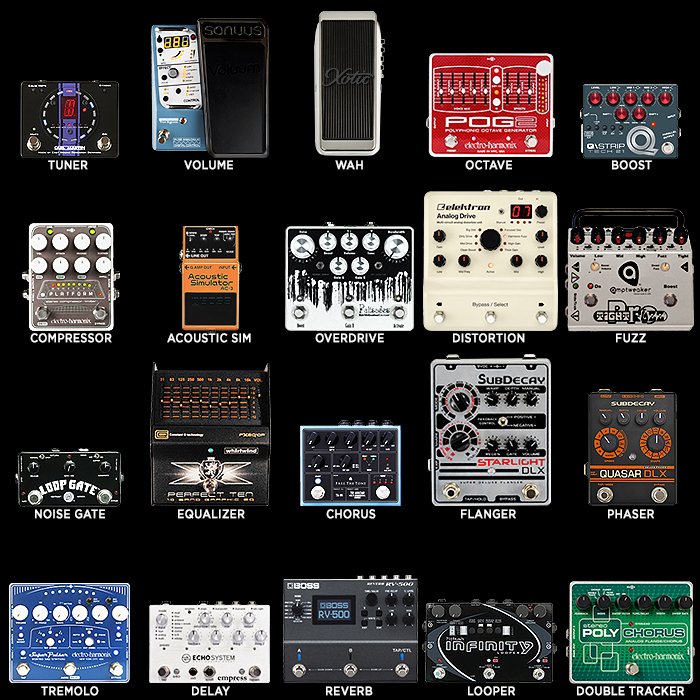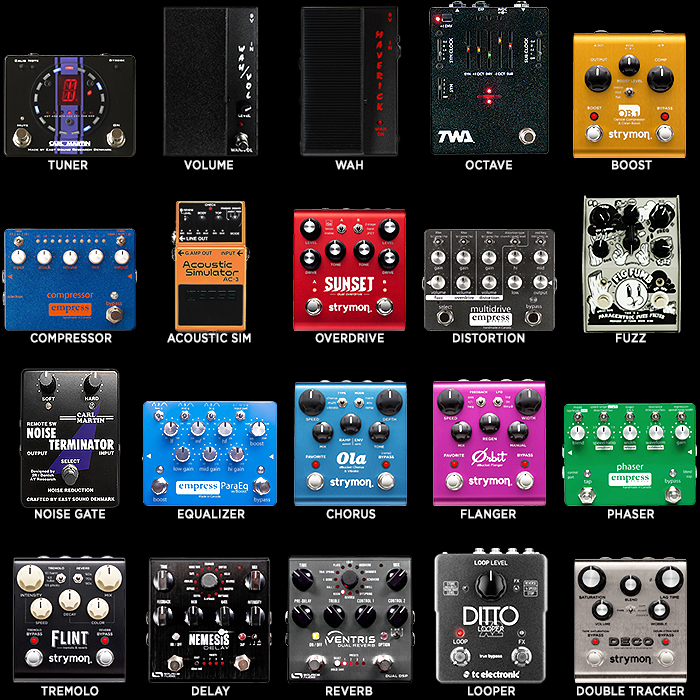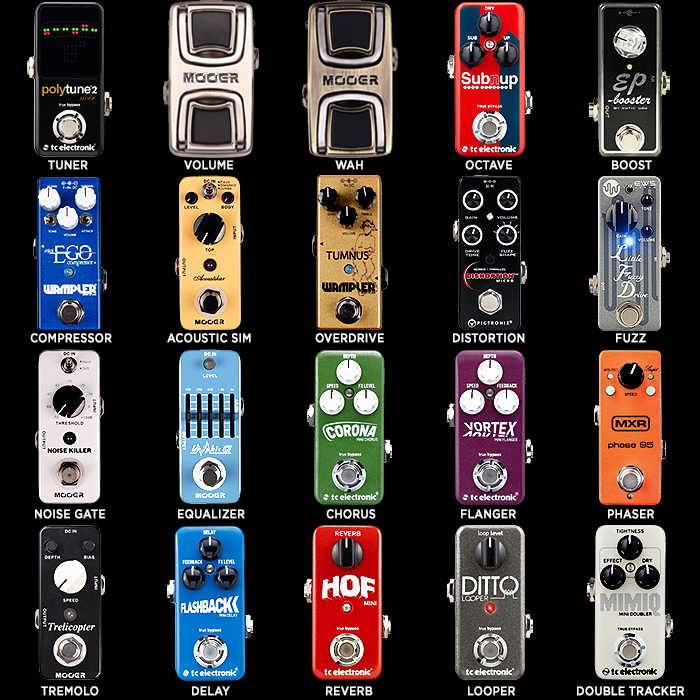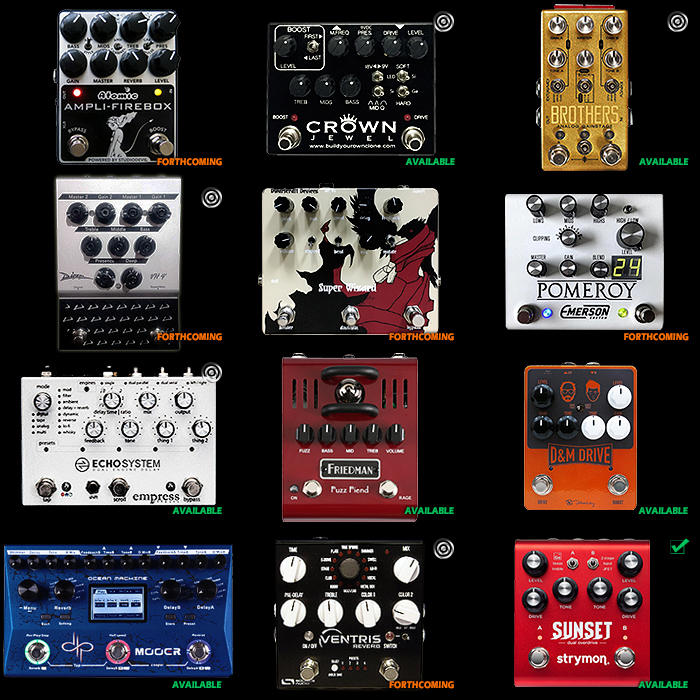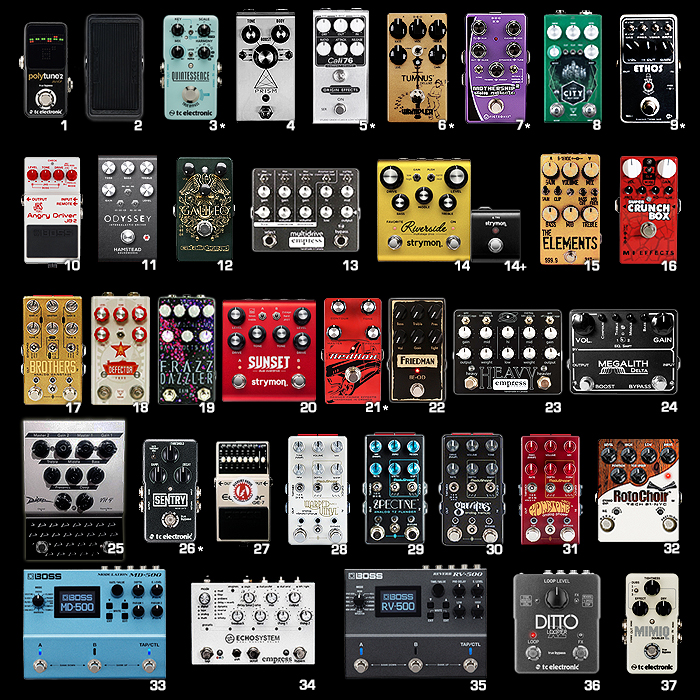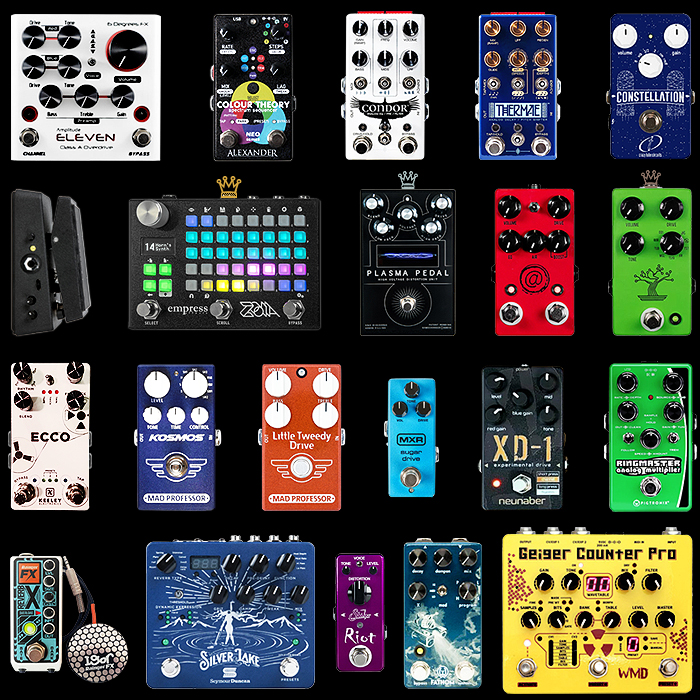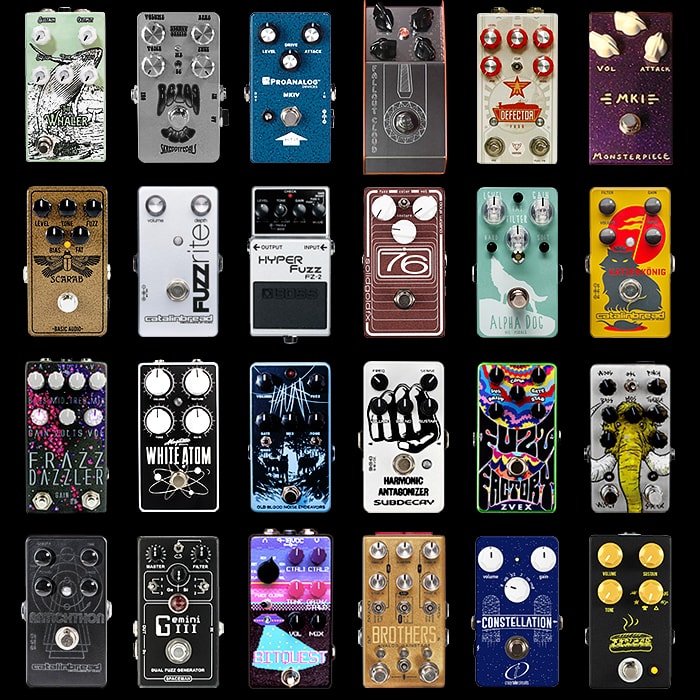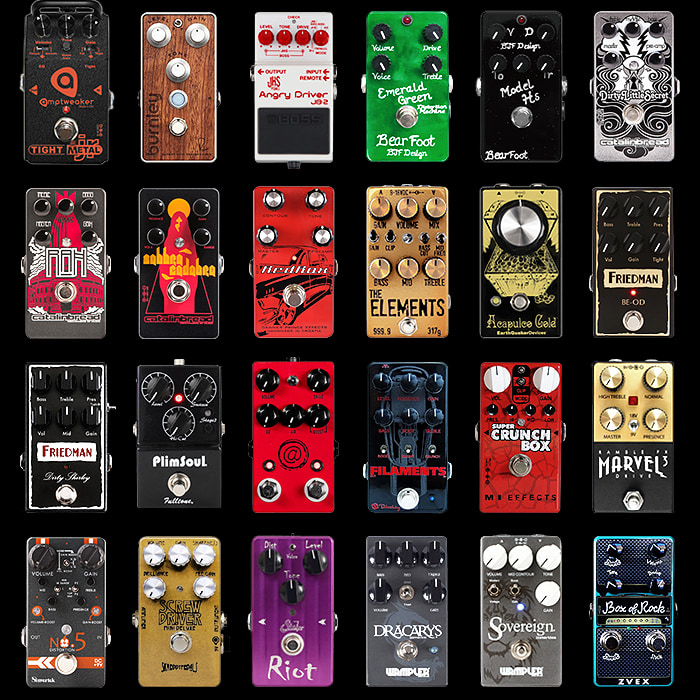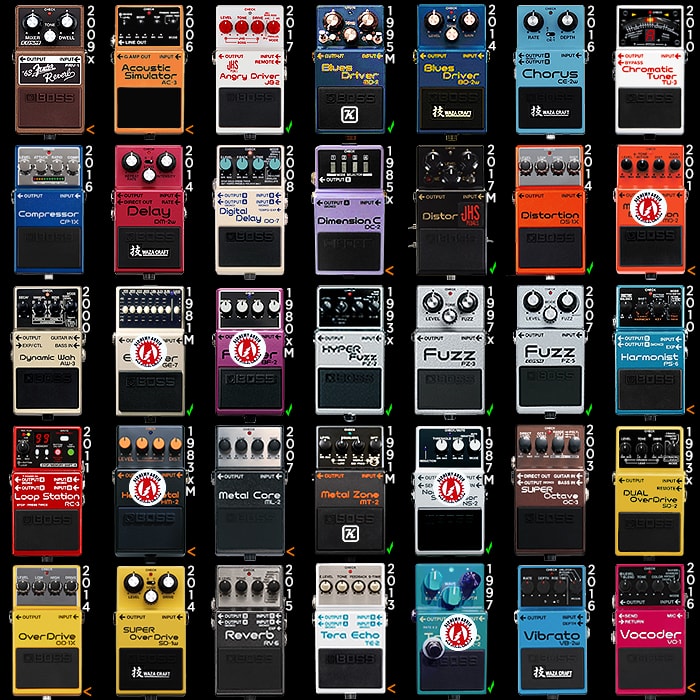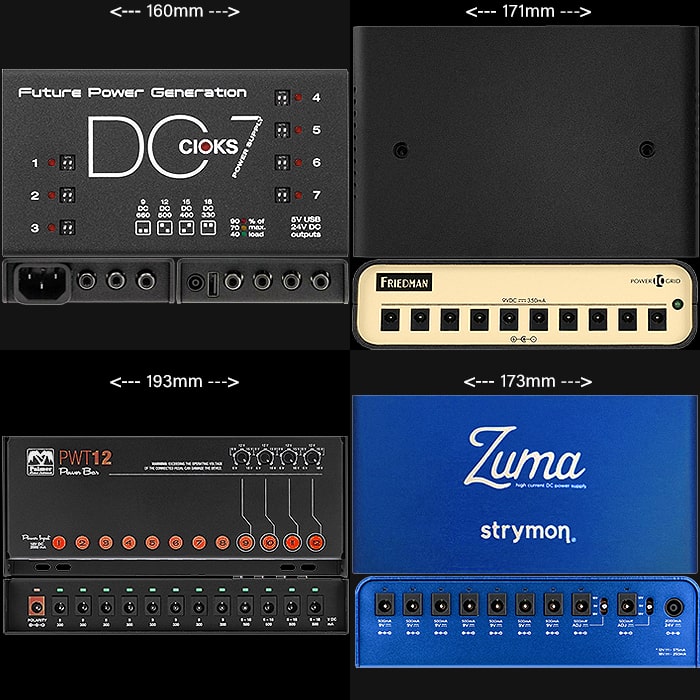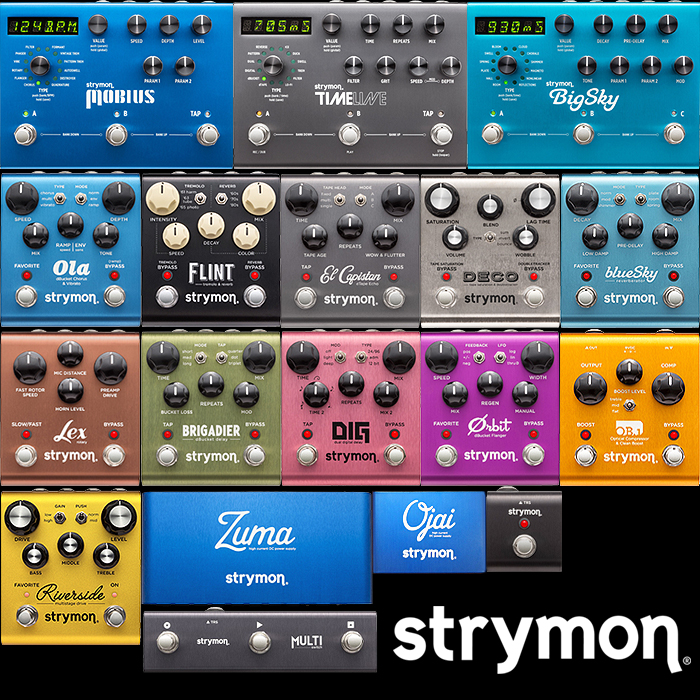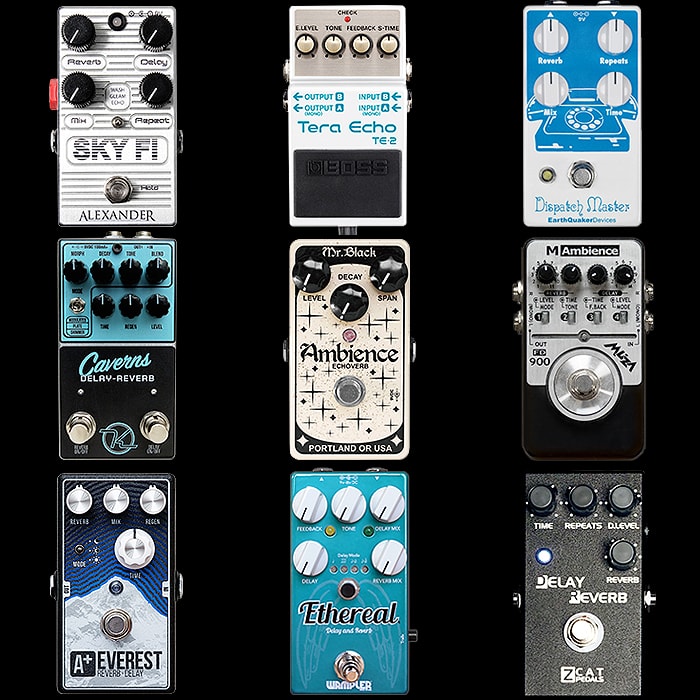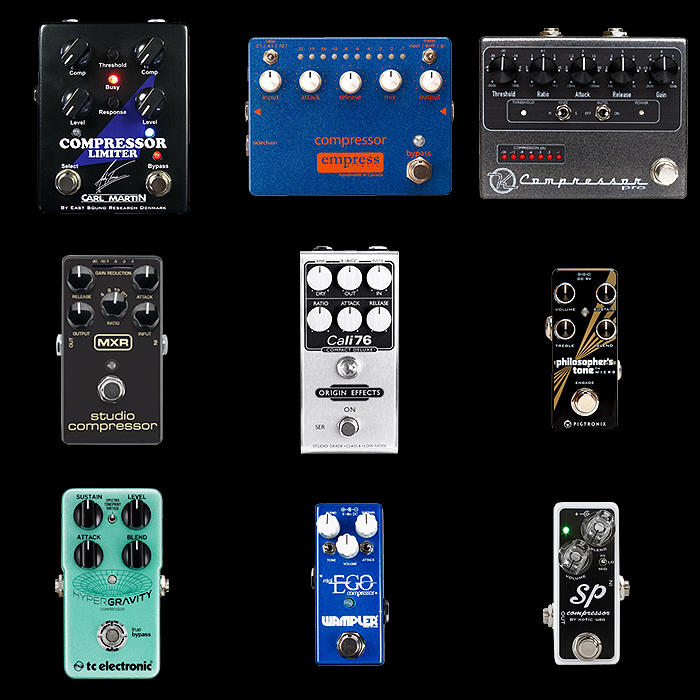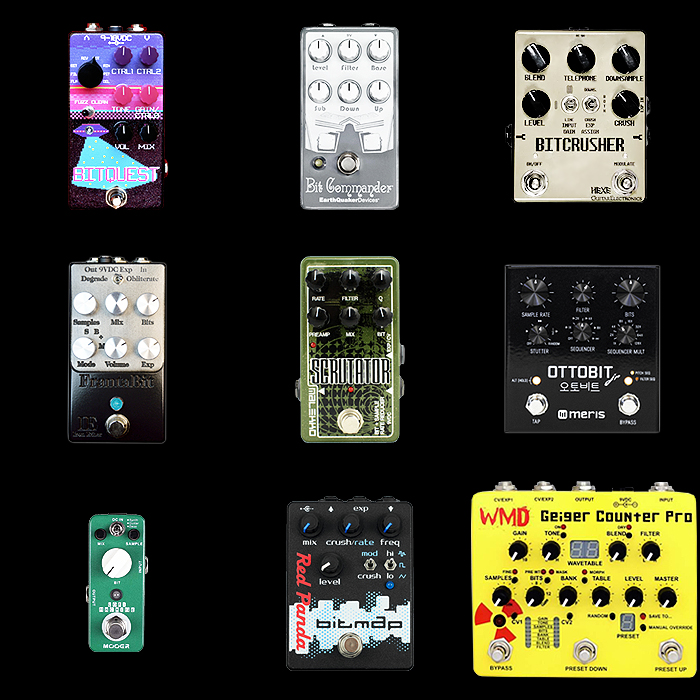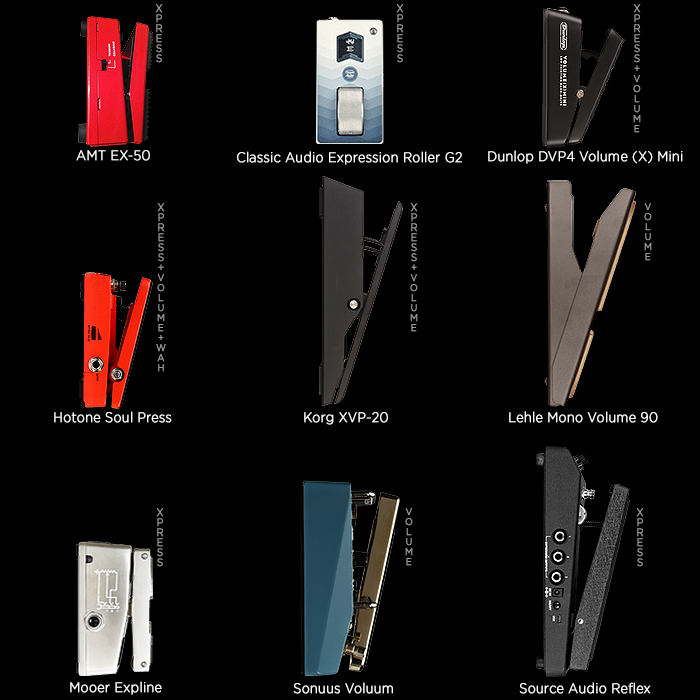The Importance of Clean Pedal Power - Optimising Power Supply to Improve Tone!
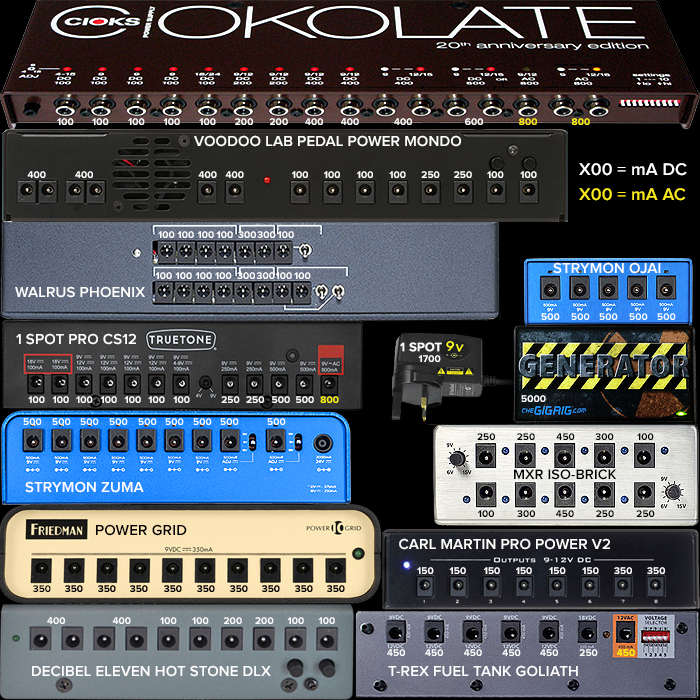
I must confess that I have thus far not paid sufficient mind to the exact power needs of my aforementioned fairly lengthy pedal chain (see Pedal Chain Delight). In fact I use 6 different power-supplies and probably too much daisy-chaining at the moment. Improbably though, my chain is still remarkably noise-free (perhaps not totally 100%), but I pretty much know where it could do with improvements.
A key problem is that decent, properly isolated power supplies are relatively dear, and I would much rather buy more pedals and guitars than spending similar money on suitably high quality isolated power supplies. The thing is though, if you don’t properly supply clean power into your pedal chain, you run the risk of creating unwanted noise / hum and underpowering certain pedals - which will give you very variable and unintentional results, or you can even damage or ruin a pedal with improper supply - so it helps to know what you’re dealing with from the outset.
I have in fact currently 25 pedals in my chain, and am powering them thusly:
- 2 x True Tone 1 Spot adapters with x 8 serial daisychains for each. Each 1 Spot = 1,700mA @ 9V, x 2 total = 3,400mA across 16 leads or circa 200mA per 16 pedals supplied
- 1 x Strymon Ojai = 5 outputs of 500mA each = total 2,500mA (currently daisy-chaining 5th output too)
- 1 x direct supply to Elektron Analog Drive = 400mA @ 12V
- 1 x direct supply to Diezel VH4 Pedal = 400mA @ 12V
- 1 x direct supply to Strymon Sunset = 250mA @ 9V
My pedals were added in fairly random order initially, resulting in bit of a tangle of leads as such - when I next reorganize, I will probably rearrange the order somewhat and re-wire the supplies more efficiently (and tidily).
The following are the actual groupings of my power needs (ascending); and fortunately all my pedals use just DC current, and all but 2 run off standard 9V, and are all centre-negative. Note that the older your pedals are the more bizarre their power requirements - often centre-positive, very high voltage and high AC current - luckily I have none, and don’t wish to acquire any such!
SK Pedal Chain Power Requirement
- 1: TC Electronic Polytune II Noir = 44mA @ 9V <100mA
- 2: Dunlop Cry Baby Mini = 0.9 mA @ 9V <100mA
- 3: Xotic EP Booster = 5mA <100mA
- 4: Wampler Mini Ego Compressor = 14mA <100mA
- 5: Wampler Tumnus Overdrive = 20mA @ 9V <100mA
- 6: One Control Persian Green = 3mA @ 9V <100mA
- 7: Mad Professor Simble Overdrive = 10mA @ 9V <100mA
- 8: Mad Professor Golden Cello = 43mA @ 9V <100mA*
- 9: Mooer Blues Mood Drive = 14mA @ 9V <100mA
- 10: Fulltone OCD Overdrive = 7mA @ 9V <100mA
- 11: Mad Professor 1 Distortion = 82mA @ 9V <100mA*
- 12: Dr Scientist Frazz Dazzler Fuzz = 75mA @ 9V <100mA
- 13: Xotic SL Drive = 10mA @ 9V < 100mA
- 14: Friedman BE-OD = 20mA @ 9V <100mA
- 15: Boss NS-2 Noise Gate = 20mA @ 9V <100mA
- 16: Boss GE-7 EQ = 7nA @ 9V <100mA
- 17: JHS Muffaletta Fuzz = 100mA @ 9V <150mA
- 18: Strymon Riverside MultiDrive = 250mA @ 9V <300mA
- 19: Strymon Sunset Dual Overdrive = 250mA @9V <300mA
- 20: Strymon Mobius = 300mA @ 9V <350mA
- 21: Strymon TimeLine = 300mA @ 9V <350mA
- 22: Strymon BigSky = 300mA @ 9V <350mA
- 23: TC Electronic Mimiq Doubler = 300mA @ 9V <350mA
- 24: Elektron Analog Drive = 400mA @ 12V <450mA
- 25: Diezel VH4 Distortion = 400mA?? @ 12V <450mA
This equates to:
- 16 x 100mA (1,600mA) | Tier 1 (<100mA)
- 1 x 150mA (150mA) | Tier 2 (100-200mA)
- 0 x 250ma (0) | Tier 3 (200-250mA)
- 6 x 300/350mA (2,100mA) | Tier 4 (300-350mA)
- 2 x 400/450mA (900mA) | Tier 5 (400-450mA)
- 0 x 500/550mA (0) | Tier 6 (500mA)
- 0 x 600mA Tier 6 (0) | Tier 7 (600mA)
- 0 x 800mA Tier 8 (0) | Tier 8 (800mA {AC})
- Total = 25 with 4,750mA Current Draw
Power Supply Needs
Pedal Power Supplies tend to variously supply the following mA outlets - 100 | 200 | 250 | 300 | 350 | 400 | 450 | 500 | 600 | 800
It’s a little disappointing you can’t buy entirely plug-and-play modular units where you can either specify exactly the outlets you need or simply click together the relevant blocks - something someone will no doubt invent at some stage in the near future. As it is at the moment you have to draw a best-fit line to fit specific power supply/ies to your exact needs.
Based on my above supply I actually have 6,725mA available, to cover 4,650mA draw - yet those outlets don’t really match up exactly, and I have made a critical error with the TC Electronic Mimiq which is currently on daisy-chained supply when it needs to be isolated and independent - 300mA is too high a draw for a daisy-chain really. Same actually probably goes for 2 of the Mad Professor pedals which even though they are ostensibly both overdrive/distortions, they contain complementary digital effects (delay | reverb) which means they should also be on separate supplies - so even though I have not noticeably been impacted so far, three of my pedals are not optimally wired.
The general rule is that it’s your higher-power digital pedals that must be on isolated supplies, otherwise you will get very odd things happening to your sound - warble, phasing. hum etc. - possibly all 3 together, which is a problem that I have occasionally with the Miniq, but I kind of like it at times too (a kind of randomized warble) - like some people deliberately underpower pedals to get a lower voltage sag effect.
I personally have just too many pedals for an easy-to-use all-round solution, though a GigRig Generator (5,000mA) could work fine - but it’s quite fiddly to set up, and you need several different sorts of junction boxes - distributors, isolators and time-lords and have to patch everything up by hand - which is fine if you have the expert assistance of pedal overlord Daniel Steinhardt. For most of us though, a single source unit which you just plug leads into is the best solution, and they come in all kinds of shapes and sizes - I have included most of the more useful ones here - typically the larger/est units available per brand - slightly biased towards my needs.
Even though 25 is a lot of pedals, I probably still will need more at some stage to experiment, but I don’t wish to use more than 6 power sockets / supplies.
So my current thinking is as follows:
- Keep 2 x True Tone 1 Spot for all
- Keep 1 x Strymon Ojai = covers current 5 Strymon pedals (about to swap TimeLine for Empress EchoSystem) = 5 pedals covered
- Add 1 x T-Rex Fuel Tank Goliath to handle 400mA @ 12V supplies for Elektron Analog and Diezel VH4 = 6 pedals covered + 1 AC
- Add 1 x Friedman Power Grid = 10 x 350mA = 10 pedals covered
So the Friedman is currently c£220 and the T-Rex is £210 meaning I get 16 additional pretty high power outlets for just over £400.
Bringing my total power supply potential to 37+1 and just under 12 Amperes total output which is within socket safety limits - based on 13 amp fuse!
Key Power Supply Solutions
[most but not all are in the above visual, which is relatively proportional but not exactly to scale)
Carl Martin
- Pro Power V2 = 6 x 150mA @ 9/12V | 2 x 350/300mA @ 9/12V | £115 (1,600mA ÷ 8)
A useful unit and good value - targets Tiers 1-4 really well, but does not quite suit my requirements
Cioks
- Ciokolate = 3 x 100mA @ 9V | 1 x 100mA @ 4-15V | 1 x 100mA @ 18/24V | 2 x 200 @ 9/12V | 2 x 400 @ 9/12V | 1 x 400 @ 9/12/15 | 1 x 600 @ 9/12/15V | 1 x 800 @ 9/12AC | 1 x 800 @ 9/12/16AC | £325 (4,300mA ÷ 11+2)
Highly capable supply with lots of options - 2 very high AC outputs which are surplus to my requirements here. Offers coverage across all tiers - relatively few high-powered ones for size of pedal, once you discount the AC outlets. Note that this brick is somewhat large! Cioks also does an excellent Eventide-focused PowerFactor 2, with 4 Eventide-compatible 400mA @ 12V outlets and then 2 x 200mA and 2 x 100mA - will be a great solution for some.
Decibel Eleven
- Decibel 11 Hot Stone Deluxe = 2 x 100mA @ 5-9V | 2 x 100mA @ 9V | 2 x 200mA @ 9/12V | 2 x 400mA @ 9/12V | £159 (2,400mA ÷ 8)
8 outlets skewed towards lower end, with 2 high power ones, does not quite fit the bill for me, but decent proposition.
Friedman
- Power Grid = 10 x 350mA @ 9V | £219 (3,500mA ÷ 10)
This is probably my new favourite - the Strymon pedals tend to be 250/300mA so this handles those and the 300mA Empress ones, but not the high power Eventide ones which need either 500mA @9V or 375mA @ 12V (therefore Strymon power supplies).
G-Lab
- PB-1 = 8 x 350mA @ 9V | £165 (2,800 ÷ 8) [not pictured]
This is another good value box with added advantage of reversing polarity (centre-positive) on a couple of the outputs. Between this one and the Friedman above the former just pips it with form-factor and two additional outlets.
Gig Rig
- Generator = 5000mA supply - but needs several Distributors (6 outs), Isolators (4 outs) and the occasional Time Lord (1) and other adapters - can be fiddly to self assemble, but immensely powerful and you can split current anyway you want to | £99 (5,000mA ÷ %)
For the pro-user this is really the go-to solution - you can split the amps any way you want to by deploying specific connectors - probably a little too fiddly for the average layman, but an essential for pedalboards, especially if you get Dan Steinhardt to do it for you.
MXR
- Iso-Brick = 2 x 100mA @ 9V | 2 x 250mA @ 9-15V | 2 x 250mA @ 18V | 2 x 300mA @ 9V | 2 x 450mA @ 9V | £165 (2,700mA ÷ 10)
Another decent brick which covers a wide range - right up to Tier 5 - will depend on your exact power requirements as to whether it is a good fit for you, will be versatile enough for most.
Pigtronix
- Power = 2 x 100mA @ 9V | 2 x 100mA @ 9-18V | 2 x 300mA @ 9-18V | 2 x 300mA @ 18V | £250 (1,600mA ÷ 8) [not pictured]
Will suit certain individuals, but does not really go high enough for me - my sweet spot is 350mA really to properly cover the higher power Strymon and Empress pedals.
Strymon
- Ojai = 5 x 500mA @ 9V | £149 (2,500mA ÷ 5)
- Zuma = 7 x 500mA @ 9V | 2 x 500/375/250mA @ 9/12/18V | £249 (4,500mA ÷ 9)
I initially thought this an amazing solution - you can chain as many as 6 Ojais to a single Zuma - giving you 39 outlets, but for a very considerable outlay (£1,143)! The 500mA will cover most DV eventualities, but when you switch (Zuma only) the 2 variable outlets to 12V, amp output drops to 375mA and only 250mA at 18V. For my two highest power pedals I need 400mA at 12V - which the Strymon power supplies cannot handle.
T-Rex
- Fuel Tank Goliath = 5 x 450mA @ 9/12V | 1 x 250mA @ 18V | 1 x 450mA @ 12AC | £210 (2,950 ÷ 6+1)
So if I want a single power supply to cover my 2 x 400mA @ 12V pedals, then this is the only sensible choice - having 5 x 450mA outlets which can be set at either 9 or 12 V and hold the same amperes, unlike the Strymons which drop the Amps for the higher Voltage.
True Tone
- 1 Spot 9V Combo = 1 x 1,700mA ÷ 8 | £35 (1,700mA ÷ 8 Daisy-chained splitters)
- 1 Spot Pro CS12 = 5 x 100mA @ 9/12V | 2 x 100mA @ 18V | 2 x 250mA @ 9V | 2 x 500mA @ 9V | 1 x 800mA @ 9AC | £169 (3,000mA ÷ 11+1)
The £35 combo adapter is how most pedal chains start out, and I make use of two myself. The DLX Pro CS12 ups the anti somewhat for a fairly broad range, but too few at the higher level for me - where I am likely to acquire more pedals.
Voodoo Lab
- Pedal Power 4 x 4 = 4 x 100mA @ 9V | 2 x 400mA @ 9V | 2 x 400mA @ 9/12V | £199 (2,000mA ÷ 8) [not pictured]
Pedal Power Mondo = 4 x 100mA @ 9V | 2 x 100ma @ 9V SAG | 2 x 250mA @ 9V | 2 x 400mA @ 9V | 2 x 400mA @ 9/12V | £319 (2,700mA ÷ 12)
2 great solutions depending on exactly what you need - the larger box is really quite sizeable, and not suitable for my requirements, I had considered the smaller one for my 2 400mA x 12V, but have decided that for similar outlay I can get the more powerful T-Rex Goliath
Walrus
- Phoenix = 8 x 100mA @ 9V | 2 x 100mA @ 9/12V | 1 x 100mA @9/18V | 4 x 300mA @ 9V | £239 (2,200mA ÷ 15)
Lots of outlets, but far too many at the lower values and in quite a strange looking box. Am sure this would be perfect for some of you - just a little too odd for me.
Yankee
- HS-M24 = 7 x 400mA @ 9V | 1 x 500mA @ 9V | 1 x 600mA @ 9V | 1 x 800mA @ 9V | 2 x 1,300 @ 9V | 1 x 330mA @ 12V | 1 x 350mA @ 12V | 1 x 700mA @ 12V | 2 x 1,300mA @ 12V | 1 x 570mA @ 15V | 1 x 440mA @ 18V | 1 x 350mA @20V | 1 x 270mA @ 22V | 1 x 180mA @ 24V | 1,100mA @ 1-22V | 750mA @ 23-24V | 2,400mA @ 5.2V | 1 x 1,300mA @ 9/12AC | 1 x 1,300mA @ 9/16AC | $575 (17,490mA ÷ 20 + 2) [not pictured]
Currently the world’s most powerful supply with 22 outlets at an eye-watering $575 but you do get 17,490mA out of it! - I’m not sure I could ever justify spending that much on a power supply! But for some rich kid of indeterminable age this will undoubtedly find a home! There are some odd outlet values there, but no question if you’re running something a little complex this is a killer product. Yankee products do seem very capable, but there seems to be an extra level of complexity here somehow - I don’t know whether it’s because the boxes are red too - but there’s something here that just jars with me a little?







